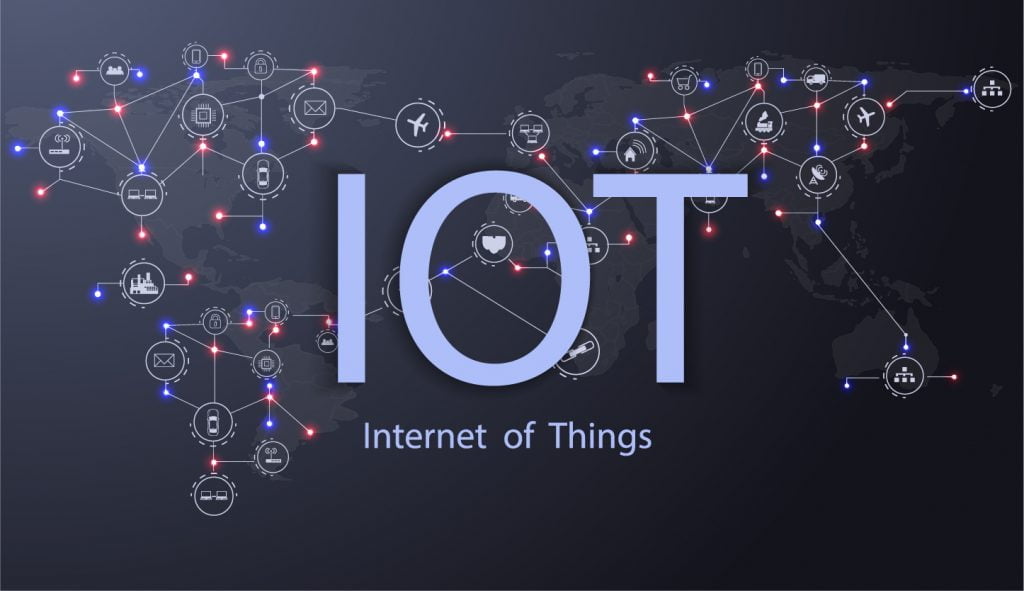Learn practical ways to secure your IoT (Internet of Things) devices in this primer.
The world around us is rapidly going digital. With the quick pace of change, it has become increasingly common for organizations to replace legacy systems with new technologies based in the cloud. Cell phones have become commonplace today, cloud technology reigns supreme, and data is at the forefront of all corporate decisions.
Everything in the domestic and corporate world seems to be connected to each other in one way or the other. The number of devices that are connected only seems to be growing around us. It is expected that more than 20.4 billion devices will be connected to the internet by 2024. These stats prove that the internet is bigger and better than what it ever was and is growing at a rate of knots.
The Internet of Things (IoT) leverages the potential of connectivity on the internet and creates a unique solution. However, just like the internet is host to numerous cyber-attack threats, the Internet of Things is also under a security risk.
This article looks at ways you can follow to secure the Internet of Things and ensure security on the platform. We also look at IoT solutions and the connectivity it provides to users.
What is IoT?
The Internet of Things is a collection of different devices connected in one place on the internet. When we talk of IoT, we possibly think of devices connected in one place on the internet, and however, IoT goes beyond that definition to encompass several things.
The Internet of Things can give internet connectivity to items that are otherwise not connected. Items like refrigerators, copy machines, coffee pots, and other items can be connected in one place through the Internet of Things to improve your control over them. Most devices that come with an on or off switch can be connected to the internet to ensure proper productivity and improve coordination.
IoT is the talk of the town today because of the following reasons:
- IoT offers a more affordable solution to build tech devices that are savvy in nature.
- IoT can work with the sharp increase in smartphone users to drive connectivity forward.
- Smartphones can be used in IoT networks as control devices.
- Almost all products come with Wi-Fi connectivity today, driving discussions related to IoT in the workplace.
IoT isn’t just a catchphrase anymore that people in the corporate world use for more traction. Instead, IoT is the next best thing in connectivity and is already being used around us.
Common Applications of IoT in the Workplace
Studies from the Workplace prove that IoT applications can significantly drive innovation forward. Research has suggested that IoT connectivity can significantly grow employee productivity and other metrics. Some of the ways organizations can benefit from IoT application in the workplace include:
- Smart locks give business owners control over their locks. Business owners can remotely control all locks inside their offices through the phone, and this can allow them to open and close locks even when they aren’t present inside the premises.
- Smart IoT energy solutions can help control lights and thermostats and regulate them for efficient electric bills.
- Siri, Alexa, and other voice assistants work on IoT to act as digital assistants. These assistants can take notes, access calendars, view and send emails, and set reminders.
- Printers are connected through sensors and can promptly ask for ink refills or other maintenance.
- CCTV cameras can help managers look at footage from the office remotely.
Ways to Secure IoT
While the Internet of Things can drive connectivity, it also makes organizations vulnerable to data hacks. External threat actors can access cloud systems and corporate servers and infiltrate the IoT ecosystem. While the security threat is gaining pace, you shouldn’t ditch your IoT solution. However, you can follow the tips below to secure IoT:
Keep Tabs on Smartphones
All of your mobile devices, including your tablets, should duly be checked and locked up every business day. If any of your essential tablets or smartphones go missing, threat actors can use them to gain access to your systems. You can also use 2-factor authentication or 2FA to secure your smartphones and tablets, and the authentication will minimize the chances of misuse.
Automatic Updates
Antivirus systems can prove quite handy in restricting cyber attacks and in securing your IoT solutions. But, you should set automatic updates that spring into action almost immediately for the system to work at full efficiency. Automatic updates will ensure that your protection is top-notch and all viruses are kept at bay.
Set Strong Credentials
Many users today repeat passwords and login details across different devices and solutions. Same passwords can make it easier for cybercriminals to gain access to your system manually. You should make sure that the password for each user is unique and different. The default password should be updated for all users across devices.
End to End Encryption
All connected devices in an IoT network are basically talking to each other. When these devices do talk, there is an intersection of data within them. Hence, organizations today need end-to-end encryption to make sure that everything is finalized and protected at all costs. Data that travels from one point to the other should always be monitored.
The security measures mentioned above will help you ensure the safety of your IoT solution. You can use these solutions to derive the benefits of IoT without compromising organizational safety.


